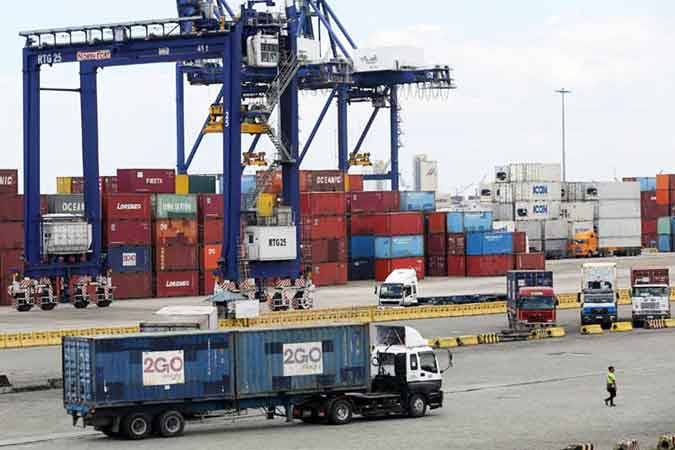
By Jenina P. Ibañez, Reporter
EXPORT REVENUES will likely reach at least $100 billion in 2022, about a fifth lower than the projected $122 to $130.8 billion in the export development plan, the industry group said.
The Philippine Exporters Confederation, Inc. (Philexport) projects to generate at least $100 billion in goods and services exports by 2022, mostly because of the global economic slowdown caused by the coronavirus pandemic and calamities this year.
“Agri-based raw materials and equipment in Taal and typhoon-hit areas were destroyed,” Philexport President Sergio R. Ortiz-Luis, Jr. said in a mobile message, referring to the eruption of Taal Volcano in January and the recent typhoons causing infrastructure and agriculture damage in Luzon.
The Philippine Export Development Plan (PEDP) 2018 to 2022 signed by President Rodrigo R. Duterte is a roadmap prepared by the Trade department to increase goods and services export revenues by a compound annual growth rate of 8.89-9.96%.
However, Philexport said generating at least $100 billion in export revenues by 2022 will depend on the extent of government assistance for the industry, which has been battered by the pandemic. During the Arroyo administration, export support funds were released to help the industry’s recovery.
Total merchandise exports were valued at $70 billion in 2019.
Year to date, exports declined by 13.8% to $45.87 billion by September compared with the same period in 2019, data from the Philippine Statistics Authority showed.
The Development Budget Coordination Committee (DBCC) expects a 16% contraction in exports this year.
The decline in exports has been attributed to the pandemic-related lockdowns and the global economic slowdown.
Around two-fifths of Philippine exporters found that they were affected by the first two months of the lockdown despite being allowed to operate, the Department of Trade and Industry (DTI) said.
Trade Secretary Ramon M. Lopez in a speech on Monday said that 42% of 235 exporters surveyed were “greatly affected by the pandemic.”
“This was because the lockdowns were implemented also by other nations and this had caused cancellation of orders for many Philippine exporters, which affected them financially,” he said.
Philexport, however, said that there has since been some improvement as lockdown restrictions were relaxed to spur economic activity.
“Overall, because of the improvement in our export performance so far, we are positive that this is the momentum we are waiting for,” Mr. Ortiz-Luis said.
“The new surge in COVID-19 cases in the US and EU can be a risk, but can also be a good break for us to fill in the supply gaps as they close some factories.”
The industry expects some supply chain disruptions, but also opportunities because of renewed lockdowns in the United States and the European Union (EU).
But Philexport said China and the Middle East are already increasing purchases, while the export sector can also take advantage of Philippine participation in the recently signed 15-country trade deal and its tariff perks in the US and EU.
Mr. Ortiz-Luis added that upskilling and digitalization among small- and medium-sized enterprises will also help export industries, along with market-building initiatives and continued financing for small businesses.
DTI’s Export Marketing Bureau (EMB) Director Senen M. Perlada in September said exports could take two years before returning to growth, noting that he does not expect the country to reach even the lower end of the export development target.
For full-year 2020, DTI-EMB said goods exports could drop by 28.6%, while overall exports could fall by 21.4%.
DTI-EMB, Philexport, and the Export Development Council are holding the National Export Congress online on Dec. 3. In the event titled “Digitalization Boost: Invigorating Exports in the New Normal,” speakers will talk about digitalization in e-commerce, logistics, manufacturing, and training.

